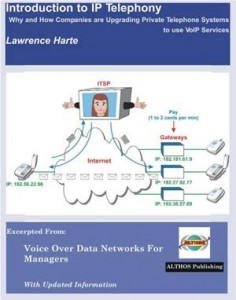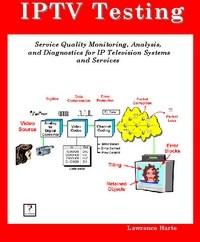This "Introduction to IP Telephony" book explains why companies are converting some or all of their telephone systems from dedicated telephone systems (such as PBX) to more standard IP telephony systems. These conversions allow for telephone bill cost reduction, increased ability to control telephone services, and the addition of new telephone information services. By upgrading their systems, companies can immediately reduce their telecommunication costs 40% to 70%. Because IP telephony systems allow the end user and system administrators to setup and disconnect telephone numbers and services, this provides increased control over their telephone features and services. IP telephony is usually based on standard data formats (Internet Protocol). This permits information systems (such as product catalog information) to be more easily linked to the telephone system, thus providing the ability for companies to increase sales through interactive telephone and Internet order processing systems. You will learn that not all voice over data IP telephony systems and services are the same. There are cost and quality tradeoffs along with common problem areas and risks. There are many ways these systems can reduce telecommunication costs along with the ability to create new revenue producing services. You will understand how you can get better than telephone toll quality audio, how to maintain or increase system reliability, and new ways to use intelligent telephone systems to increase company revenues. You will learn how employees can keep their phone numbers and existing equipment (using adapters) and call anywhere in the world using IP telephony services. Discover how you can get one (or several) international telephone numbers so your customers can use a local telephone number to call you when you are in another country.
Introduction to ip telephony, why and how
Sobre
Talvez você seja redirecionado para outro site









